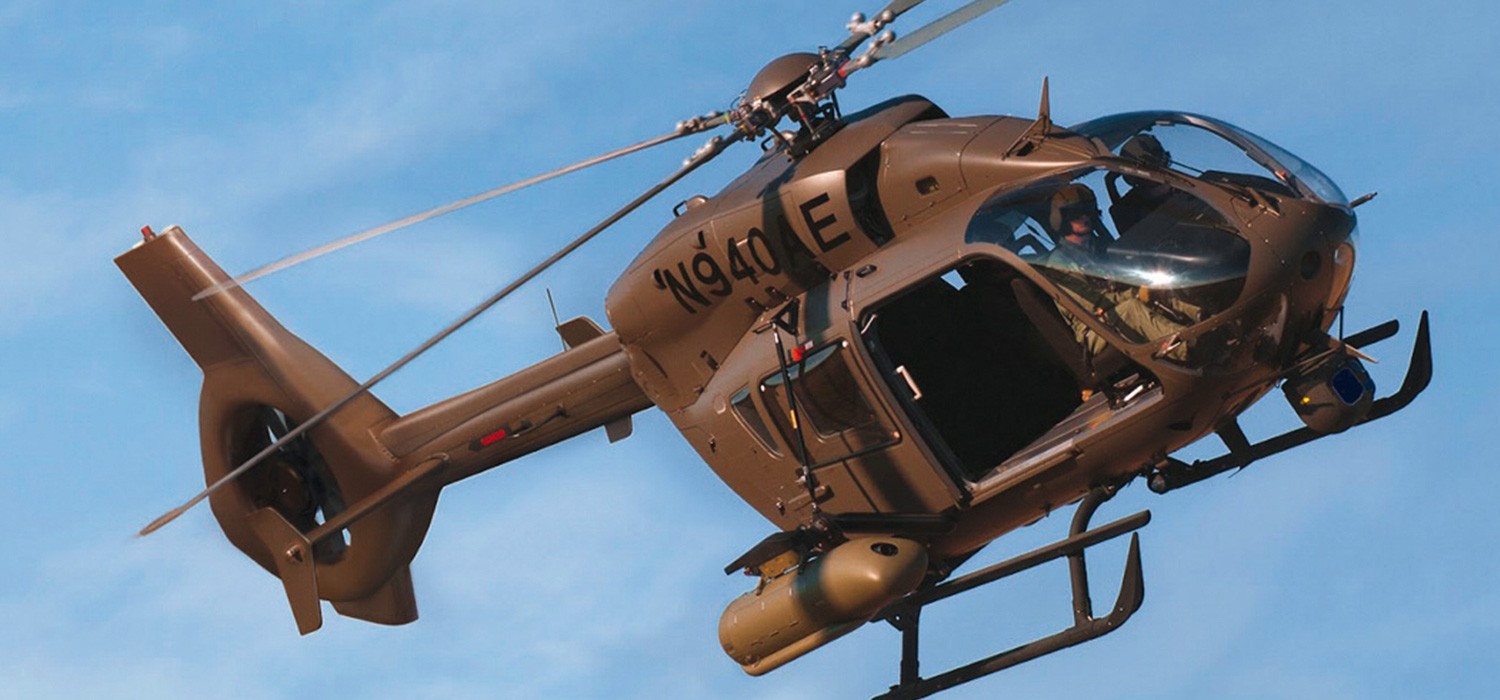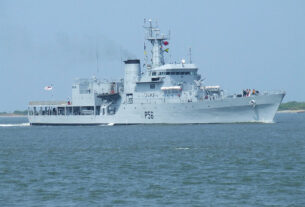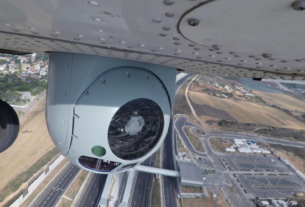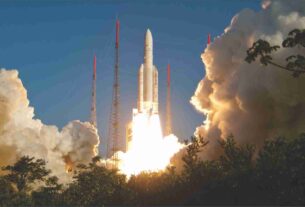Use of choppers in modern battlefield
Choppers may be slightly outdated in modern warfare due to their sluggish speed and reliability but these machines are being used for a wide range of other roles in the theatre which is helping ground forces to clear off the enemy area with tremendous advantages.
It was not until the second part of the 20th century that advances in technology enabled the gradual emergence of a new form of flying cavalry.
Because of its characteristics and its unique flight capabilities, the helicopter initially provided ground troops with an unprecedented ability to free themselves from terrain barriers and from the reliance on major infrastructures. In a second phase, rotary wing aircraft became actual combat systems, even forming autonomous airmobile forces.
In parallel with continuous platform improvements thanks to the considerable technical advances of the past 30 years, the helicopter has been able to adapt and learn lessons from the various conflicts that have marked its existence.
On occasion it has become the emblematic representation of the conflict, whether in the Vietnam War or in the failed raid of October 3, 1993 in Somalia. These different operational engagements have highlighted its utility in modern conflicts, as well as its vulnerabilities.
Today the helicopter is omnipresent across a large spectrum of defence missions, as well as in public security roles.
In Western forces, this reality translates into intensive use of rotary wing aircraft, leading to premature ageing of fleets and substantial maintenance costs.
At the same time, the dual heritage of the Cold War and military transformation has favored the development of sophisticated new- generation systems that are costly to produce and operate.
Immediately following World War II, the US Marine Corps expressed its interest in this type of mission, although in this respect they were well ahead of the technical possibilities of the time.
In the context of a general debate concerning the future of amphibious operations in the atomic age – the latter constituting a new threat for troop concentrations which were inherent in landing an expeditionary force – they viewed the helicopter as a platform allowing troops to be projected directly into the hinterland of a coastal area.
Building on these bold innovations, the Marines played an important role in Korea, where the first operational revolution in the use of the military helicopter took place with the progression from rescue-liaison to transport-assault, a precursor for large-scale landing operations.
Operation Summit on September 20, 1951 marked the first use of tactical heli-transportation of 224 Marines into a combat zone – a particularly inaccessible hilltop.
Operation Bumblebee carried almost 1,000 Marines by helicopter using twelve H-19s. Several trips were necessary, as the machine could not carry more than about 15 passengers.
Air mobility
It was in Algeria, however, that airmobility was systematically employed for the first time. One of the lessons from Indochina was the chronic lack of mobility of modern forces in guerrilla warfare, faced with an insurgent enjoying the advantage of superior intelligence, intimate knowledge of the terrain and population support, eliminating concerns about logistics.
This mobility gap forced units to adopt a reactive posture, undermining troop morale by preventing them from taking the initiative.
In this “guerre en surface”, where the insurgents operated over the whole territory and were seemingly blessed with ubiquity, helicopters appeared to offer a technical solution to this unfavorable strategic asymmetry.
Building on their own experience from Indochina, but also well informed about US tactical innovations, French military leaders decided to set up a helicopter force with tactical value.
Created in 1954, the ALAT accounted for over half of the “operational” helicopters in Algeria within what would soon be known as Group 101, itself composed of two helicopter groups.
However, due to the recent creation of the ALAT and the lack of training of its pilots, the French Air Force retained responsibility for heavier transport helicopters like the H-34, the replacement for the flying bananas.
The Navy also had a unit, placed under the authority of the Air Force. Altogether the 10th Military Region (Algeria) had almost 300 machines in 1955 and continued expanding its fleet until 1962.
This organizational dispersion explains the decision taken in early 1955 to create the Bureau for Movements and Transportation (Bureau des Mouvements et Transports; BMT) which coordinated the mobility resources at the joint force level for the entire 10th Military Region.
Acting as a genuine orchestrator for helicopter transportation, the BMT established priorities, promulgated regulations, and coordinated operational and logistical movements and transport requirements.
For the first time in history, the use of helicopters was largely dedicated to air assault. The basic operational unit was the Helicopter Intervention Unit (Détachement d’intervention hélicoptère DIH), normally comprising seven H-21s or H-34s for transportation and one or two Alouettes for observation and backup.
The volume transported by one DIH represented approximately a company of 100-150 paratroopers. This new mission, in close proximity to the combat zone, immediately brought up the question first raised in World War II concerning the vulnerability of helicopters to ground fire.
The operational use of helicopters in Vietnam to provide mobility support directly under enemy fire reached its limits in view of the exorbitant cost of the more than 5,000 machines destroyed during the conflict.
It rapidly became clear that the armed helicopter introduced in Algeria was not enough and the situation required the development of an appropriate fire support platform.
The Army had anticipated this problem, as shown by the initiation of the Advanced Aerial Fire Support System (AAFSS) research program in 1964, which was supposed to lead to the first attack helicopter.
However, with the AAFSS program struggling to produce results, Bell independently developed its own attack helicopter based on its utility helicopter, the UH-1 Huey, culminating in the AH-1 Cobra in 1967.
Produced in response to an urgent requirement arising from conflicts in Asia, it retained the Huey’s engine but with a streamlined fuselage, a forward-mounted cannon and stub wings to carry rockets.
Deployed to Vietnam in 1968, where they took part in operations following the Tet offensive, Cobras were used as Aerial Rocket Artillery (ARA), a concept proposed to Fort Rucker in the late 1950s but never really implemented until then.
The initial idea was to escort the UH-1s and support ground units, as well as prepare artillery before an assault. However, the system lacked coordination, as illustrated by the friendly fire incidents involving Cobras at the battle of Hamburger Hill in 1969.
Firing from a range of more than one kilometer on the basis of intelligence provided by aerial observation, the Cobras hit friendly positions four times during this battle, killing seven soldiers and wounding over 5034.
Combat role
The ARA concept was dropped in 1972, although the fire support role of combat helicopters was far from being abandoned on both sides of the Iron Curtain.
Soviet observers in Vietnam studied the effectiveness of the AH-1 Cobra. Up to that point, the Soviets had developed an airmobile doctrine at the tactical level based on the Mi-8 Hip, a multi-function transport helicopter halfway between the Huey and the Chinook.
The idea of a combat helicopter led them to develop the Mi-24 Hind-A, which was fielded in 1973. Equipped with a 12.7 mm, later 30 mm, cannon and stub wings capable of carrying rockets, the craft was fitted with titanium armor providing full protection against small arms fire.
It was also designed to accommodate eight passengers. This transport capability set it apart from US attack helicopter programs: where the latter had been conceived as flying tanks, the Mi-24 was more like a flying infantry combat vehicle, even if in reality it was rarely used for transportation.
The primary theater of operations for the Red Army during this period was Afghanistan, where the combat helicopter principle was put to the test.
Combat helicopters were much appreciated by soldiers in the field who often saw them as their only reliable source of fire support.
Interventions by ground attack aircraft were considered too intermittent, and the drawdown that started in 1985 reduced the reactivity of artillery support.
In March 1980, as part of the territorialization of the Red Army, each district received a detachment of special forces, spetsnaz, VDV, a contingent of attack helicopters Mi-24 and transport helicopters Mi-8, Mi- 6.
Much has been written about the impact of Man-Portable Air- Defence Systems (MANPADS) and particularly heat-seeking Stinger missiles supplied to the mujahideen by the CIA starting in the last quarter of 1986.
However, these accounts need to be treated with caution: after an initial period of panic, Mi-24 pilots were able to quickly find effective counter-measures by using flares or by flying either at very low altitude to jam the guidance system or very high, beyond the range of the missiles.
Helicopter operations moved progressively from 500 m above the ground to more than 2,000 m, with an equivalent loss in precision and reactivity, which increased collateral damage and further alienated the population.
Losses, however, were limited to less than 350 helicopters, more than half of which occurred before the arrival of the Stinger.
From a strategic point of view, therefore, MANPADS performance was less stellar than has sometimes been suggested – all the more so when one recalls that Gorbachev had decided to withdraw from Afghanistan more than one year before they arrived in-theater.
The Soviet helicopter concept of employment was much more ambitious than might be assumed from Red Army actions in Afghanistan.
In fact, the Red Army had gone further than anyone in studying the possibilities of a real maneuver based on rotorcraft.
The studies had started in the lessons learned by Russian strategists from the Yom Kippur War. They noted the fragility of tanks with respect to the new Anti-Tank Guided Munitions (ATGM), and that of close air support aircraft with respect to sophisticated and multi-layered air defense systems.
Thus, the armor/aviation combination on which the entire Soviet (and Israeli) operational art had been based since World War II was thrown into question. The result was a renewed interest in platforms such as self-propelled artillery and combat helicopters.
It was not until the following decade, with the much more offensive doctrine of Air-Land Battle (1982) and the notion of deep attack, that the maneuver capacities of the helicopter were truly recognized.
Even though helicopters were not included in the initial version of Air-Land Battle, due to the lack of autonomy of the Cobra, the fielding of the first AH-64s (1984) boosted the credibility of their vertical envelopment mission, to which maneuver warfare theorists were so attached, thus rehabilitating the notion of air assault.
Having shaken off the shackles of its strictly anti-tank role thanks to the transition to an offensive maneuver strategy, the helicopter finally acquired the status of a combat weapon.
On an organizational level, this reinforced role for the helicopter translated into changes in structure, the most notable of which was the birth of the Army Aviation Branch in 1983.
This emancipation of Army Aviation, hitherto attached to the artillery, definitively established
the helicopter as a maneuver weapon.
At the same time, the Division 86 force structure proposed by General Starry called for the creation of aviation brigades, each comprising two attack helicopter battalions (up to 36 AH-64 Apaches) and a transport battalion (24 UH-60 Black Hawks) with organic infantry.
Air-land maneuvers
This model of helicopter units specialized in air-land maneuvers had an impact at division level: the 101st Airborne Division (Air Assault) became the spearhead for air-land maneuvers.
In France, the creation of the 4e Division Aéromobile was based on the same employment principle, on a smaller scale.
In general, the idea was to liberate these units from the combined arms approach which required that operational tempo be adapted to the slowest vehicles, thus depriving the helicopter of its mobility differential by confining it in many cases to a fire support role.
In spite of its theoretical and doctrinal attractions, this principle of employment for maneuvers was never really applied for both political and operational reasons, which made it impossible to risk such a gambit.
In 1991, during the Gulf War, the 101st Airborne saw Operation Desert Storm as an ideal opportunity to apply the principles of Air-Land Battle.
Positioned /as the flank guard of the allied force, its role was to cut off the road to Baghdad, the primary line of retreat for Iraqi armored divisions fleeing to the North.
Having reached the Euphrates, General Binnie Peay, who was commanding the 101st, planned to airlift an entire brigade across the Euphrates by Chinook and Blackhawk helicopters and plunk it down north of the critical city Bassorah.
This proposal, unprecedented in the history of warfare, was deemed too risky by General Luck, commander of the XVIII Airborne Corps, and General Schwartzkopf at the head of the Coalition.
In addition to the risk of losing such an armada the 101st alone was worth several billion dollars, serious problems had arisen during the first days of ground operations.
In the first place, maintenance issues had turned out to be much more problematic than expected, as the sand found its way into the smallest mechanisms, temperatures caused engines to overheat and, in particular, the poor distribution of Rapid Refuel Points slowed down maneuvers considerably.
Moreover, once Army helicopters managed to build up sufficient momentum to outstrip the armored divisions, they tended to cause confusion at the joint force level, forcing the Air Force to move its Fire Support Coordination Line (FSCL), the line beyond which it could operate without fear of friendly Air Force fire.
This type of complication due to the specific tempo of helicopters drew the wrath of General Chuck Horner, who was in charge of air operations and who held the 101st Airborne responsible for the fact that the Air Force was unable to prevent part of the nationalguard from pulling back to Baghdad.
Another missed opportunity for the operational use of the helicopter occurred in April 1999, on the sidelines of Operation Allied Force in Kosovo, when the USA planned at one time to deploy a battalion of Apache helicopters to directly engage the troops of Milosevic.
Task Force Hawk comprised 6,000 men, 24 helicopters, one Multiple Launch Rocket System (MLRS) battery and 26,000 tons of equipment transported to Albania at a cost of almost 500 million dollars.
Unlike Peay’s proposal during Desert Storm, the mission no longer corresponded to the model of air-land maneuver specified by doctrine.
Designed as precision complements to air power, the Apaches were intended to supplement Air Force strikes without putting boots on the ground.
Weapon system
The most striking advance, however, was in relation to weapon development. The helicopter became a weapon system integrating the full spectrum of systems for target acquisition (laser telemetry, optics, IR camera) and engagement (cannon, rockets, missiles).
The AH-64A Apache, for example, was upgraded in the 1990s to produce the AH-64D version with its mast-mounted Longbow radar.
The latter system was capable of detecting and tracking up to 256 different targets, whatever the weather or lighting conditions. It could thus be used to launch “fire and forget” munitions like the Hellfire missile.
During stabilization and counterinsurgency operations, the helicopter retained a key role. It made it possible to take action across the entire theater, which ground forces could not permanently control due to its size and their limited manpower.
In 2004, the US Army Aviation alone deployed more than 500 helicopters in Afghanistan and Iraq. They were an integral part of the combat being fought by troops on the ground and provided absolutely essential support in terms of both movement and firepower.
Finally, it is important to note the leading role played by two specific airmobile functions in current operations.
For all of the reasons that have been mentioned above, it appears practically indispensable to have a fleet comprising at least one heavy transport platform.
The CH-47 has established itself as the workhorse of US and British forces, due to its rugged design and its logistical and tactical transport capacities.
The possibility of inserting the volume of one platoon or one company in a single rotation of a few machines constitutes a first-rate tactical asset and a solid security guarantee.
Similarly, in Iraq and Afghanistan, special operations have played, and continue to play, a decisive role. As was recently demonstrated by Operation Geronimo, which led to the elimination of Bin Laden, the helicopter is the preferred system for this type of unit due to its unique capabilities.
Insertion or extraction of intelligence teams, civil evacuations, hostage liberation and air assault: for missions of this type, specially adapted helicopters, like the MH-60 used by US special forces, represent the only weapon system capable of operating in the most hostile environments, even if these operations involve substantial risks.




